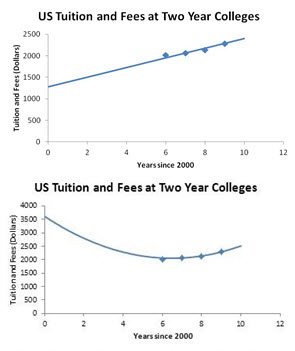
I guess all of you are also finishing off your first week or two of classes. Over the years I have spent less and less time going over the course policies on the first day. For me, the first day used to be an anomaly. I talked all of the hour and fifteen minutes and they sat. None of the subsequent classes would be like this. Yet this first day often turns students off and gives them the impression that my class is a one way communication channel. Many students may drop the class purely on the basis of that first day.
Instead of spending the entire class on the syllabus, I do fifteen minutes on how their grade is determined and then move on to an activity. They take a syllabus quiz over everything and that seems to be a better way to get them to review what they will be held responsible for. For my college algebra class this semester, this activity had a secret motive. I decided to add to the group activities I do in class and make the projects in the class a collaborative effort. To make these groups effective, I need to get a feel for the students and how they work together. I wanted the activity to give me a feel for their personality…leader or follower. Continue reading “Passive and Active Activities in the Flipped Classroom (Part 2)”


 In the College Algebra course taught at Yavapai College, modeling data with different types of functions is a key focus. So the projects I use in my class utilize the same data and question. As noted in
In the College Algebra course taught at Yavapai College, modeling data with different types of functions is a key focus. So the projects I use in my class utilize the same data and question. As noted in  Over the past several semesters, I have developed a series of student projects that I use in College Algebra and Finite Mathematics. These projects incorporate a large number of the learning objectives in these courses. They require students to apply these learning objectives to a real world problem over a significant portion of the semester. My use of projects like these are based on research coming out of the field of neuroscience. Many of these results are summarized nicely in the book
Over the past several semesters, I have developed a series of student projects that I use in College Algebra and Finite Mathematics. These projects incorporate a large number of the learning objectives in these courses. They require students to apply these learning objectives to a real world problem over a significant portion of the semester. My use of projects like these are based on research coming out of the field of neuroscience. Many of these results are summarized nicely in the book